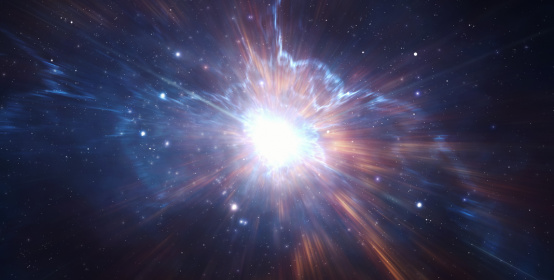
The cosmos is a vast expanse of wonder and mystery, and hidden within its tapestry are clues that hold the secrets to the universe's formation and evolution. Among these enigmas are the theoretical constructs known as “bubbletrons,” hypothetical particle accelerators that might have played a pivotal role in building the universe as we know it. In this exploration, we delve into the intriguing realm of bubbletrons, their theoretical significance, and their potential impact on our understanding of the cosmos.
To understand the concept of bubbletrons, it's essential to grasp the basics of particle accelerators. These monumental machines simulate conditions similar to those in the early universe, enabling scientists to study the behavior of particles at the smallest scales. By accelerating particles to near-light speeds and smashing them into one another, researchers unlock insights into the fundamental forces and building blocks of matter.
Particle accelerators, like the Large Hadron Collider (LHC) at CERN, have unveiled the existence of elusive particles such as the Higgs boson, offering a deeper understanding of the universe's structure. However, the quest doesn't stop there. Theoretical physicists continue to push the boundaries of possibility, seeking answers to questions that transcend our current understanding.
At the intersection of speculation and scientific curiosity lies the notion of 'bubbletrons.' The term itself exudes a sense of whimsy, yet its theoretical implications are profound. Bubbletrons are envisioned as hypothetical particle accelerators that operated during the universe's infancy, mere moments after the Big Bang.
According to some theoretical frameworks, in the early universe, particles underwent rapid acceleration due to cosmic inflation—a period of exponential expansion shortly after the Big Bang. This inflationary epoch is believed to have been driven by a field called the inflaton. Bubbletrons emerge from the possibility that regions within this inflaton field transitioned to a lower energy state, akin to the way water vapor condenses into bubbles when it cools.
In this theoretical scenario, these transitioning regions would act as natural particle accelerators, propelling particles to velocities that approach the speed of light. These primordial bubbletrons could have played a role in shaping the distribution of matter and energy in the universe, seeding the structures of galaxies, stars, and cosmic filaments that we observe today.
The significance of bubbletrons extends to the fundamental components of the cosmos. The early universe was a hot and turbulent cauldron of particles and radiation. The behavior of these particles during their acceleration in bubbletrons could have left an indelible imprint on the cosmic microwave background radiation, a remnant glow of the Big Bang that permeates the entire universe.
Studying this radiation allows cosmologists to glean insights into the universe's age, composition, and expansion history. If bubbletrons indeed existed, they could have left distinctive patterns in the cosmic microwave background, patterns that might be detected through advanced observational techniques and advanced mathematical analyses.
As captivating as the concept of bubbletrons is, it's important to note that it currently resides in the realm of theory and speculation. While the theoretical foundations are intriguing, direct evidence for the existence of bubbletrons remains elusive. This pushes the boundaries of scientific inquiry, challenging researchers to explore novel ways to detect their potential traces.
Cosmological observations, such as studying the polarization patterns in the cosmic microwave background, might offer hints that align with bubbletron-induced patterns. The detection of such patterns could provide indirect support for the theoretical construct. However, the complexity of the early universe and the challenges of teasing out these signals make the journey far from straightforward.
Bubbletrons represent more than a captivating idea—they exemplify the essence of scientific exploration. The pursuit of understanding the universe's origins requires imaginative speculation, rigorous mathematics, and relentless curiosity. While bubbletrons are a speculative concept, their very existence challenges researchers to probe the universe's deepest mysteries, stretching the limits of our comprehension.
In the realm of theoretical physics, bubbletrons are one thread in a vast tapestry of ideas. They remind us that the universe is a cosmic laboratory, one that invites us to question, speculate, and seek answers to the most profound questions of our existence. Whether bubbletrons ultimately prove to be a tangible cosmic phenomenon or an intricately crafted mathematical concept, they underscore the limitless capacity of human inquiry and our ceaseless mission to decode the cosmos.